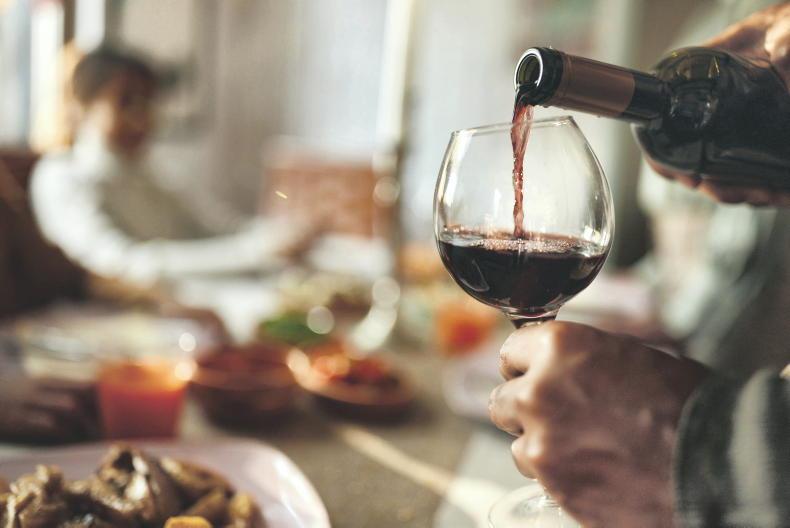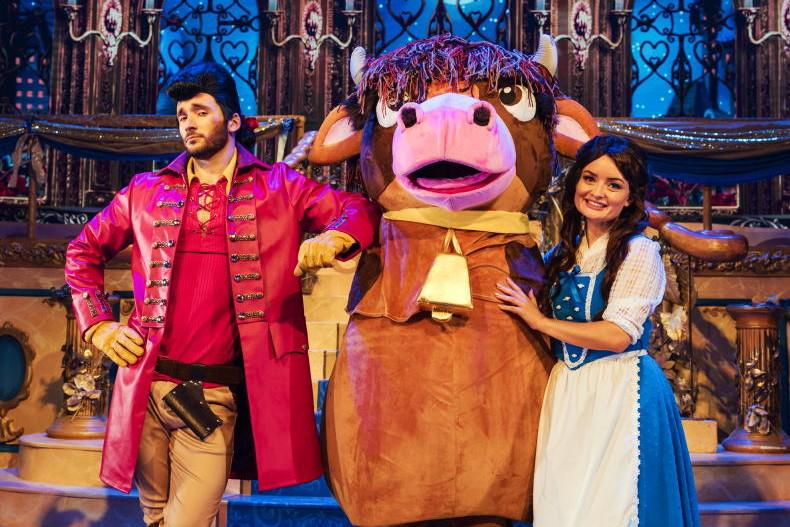It all started with my eldest daughter last year. “Mom, will you buy me some Prime?”
I had never heard of Prime, so I asked her what it was. She explained that it’s this “really cool drink and you can collect all of the colours.”
She was hearing about Prime everywhere – on her YouTube Kids account, from her friends at school and from her older cousin, who was drinking Prime any time she could get her hands on it.
So, like the million and one other things parents today need to educate themselves on – particularly as we face another school year in just a few weeks – I learned all I could to help me the next time I had to tell her “no.”
The founders of Prime – YouTubers and athletes KSI and Logan Paul – have made a killing on their drinks, thanks to clever marketing and targeting their massive online following.
According to Prime’s website, the founders say they created the products “to fill the void where great taste meets function,” basically marketing it as a sports drink, with added electrolytes and Vitamin B.
Energy drinks
The brand features two separate lines, called ‘Hydration’ and ‘Energy’. The Hydration line is caffeine-free and includes coconut water, with flavours like ‘Tropical Punch’ and ‘Ice Pop’.
The Energy line comes in similar flavours, but includes 140mg of caffeine per serving. For comparison, the average cup of coffee has approximately 95mg of caffeine and a small can of Red Bull (another energy drink) has approximately 75mg.
This is just one of many such energy drinks on the Irish market.
It is concerning to see drinks with so much caffeine being packaged in attractive colours and potentially marketed to younger consumers.
Registered dietitian Sarah Keogh says part of the problem with energy drinks is that adults often see them as a regular soft drink when they are anything but.

Sarah Keogh is a registered dietitian.
“The same as you wouldn’t give your child an espresso – I wouldn’t give them an energy drink,” she says. “The problem is, they have the warning label [on the can regarding caffeine content], but because we see them as soft drinks we’re not connecting to what’s in them.”
Excessive consumption of energy drinks can lead to health problems (including cardiac arrest), but even in smaller doses, caffeine can lead to sleep disruption and anxiety in children.
These drinks also potentially contribute to the rising obesity rates in children and teenagers, thanks to the high sugar content found in most.
A number of countries, including Poland and Latvia, regulate the sales of energy drinks to children, and the United Kingdom looks ready to introduce a similar ban.
This would require an ID to purchase energy drinks and no sales to anyone under the age of 16. It remains to be seen if Ireland will follow suit.
Targeted marketing
Prime’s Hydration line is less problematic, but in terms of nutritional benefit, there isn’t much there. It is mostly online hype and marketing driving its sales.
“Advertising works – and children are just as targeted as adults,” Sarah explains.
“There is plenty of research out there on how to make children like your products. [Advertisements are] a little more controllable on mainstream media, for example what children might see on television. However, there’s a lot less control on social media.
“It’s keeping an eye on social media with your kids,” she adds. “As an adult, you might skip an ad, but maybe your kids are watching them. You’re not sure what they’re exposed to, or how often.”
It’s not all bad news, though: a 2022 University of Galway study (published in the European Journal of Nutrition) showed that Irish adolescents have seen the sharpest decline in consumption of sugary soft drinks in all of Europe. The research looked at data going back 20 years on more than 530,000 children aged 11, 13 and 15.
“In the most recent research we’ve seen a reduction in the consumption of soft drinks, so parents are becoming much more aware,” says Sarah.
Juice and minerals
I may not keep many soft drinks in my house, but I always have some orange or apple juice in our refrigerator. After all, orange juice has vitamins. It’s not that bad… right?
Sarah says that while eating an actual orange would be better, fruit juices are fine as long as the serving portion is controlled.
“The trick with fruit juice is very small amounts,” she says. “Just 150ml of fruit juice a day. For very young children, you dilute that with water. In general, though, kids should just stick with water and milk. If they don’t know any different, they don’t question it.
“Then, when we’re looking at soft drinks of any kind, they are treat food – they are rare.”

Dr Sarah Browne is a registered dietician and lecturer at University College Dublin.
Dr Sarah Browne, assistant professor in clinical nutrition and dietetics at University College Dublin, believes the biggest issue associated with the consumption of sugary drinks in children is the fact that they replace more nutritious drinks and foods.
“Children who consume more sugary drinks tend to also have an overall lower intake of nutrient-dense foods,” she says.
“Research on the foods and drinks that contribute to the development of obesity in childhood can sometimes be conflicting, however we have enough evidence [to know] that sugary drinks are a risk factor.
“There is also no good evidence to suggest that sugary drinks should be replaced with artificially sweetened beverages [and some early research indicating good reasons not to],” she adds.
While sugary drinks might be OK every now and then, dental experts also warn that it is increasingly easy for “every now and then” to become “far too often.”
Dympna Daly is a paediatric dentist based in Galway.
Having worked in dentistry for the past 30 years, she tells Irish Country Living that she and her peers thought the rates of tooth decay in children would decline as the general public learned more about oral health care.
However, she says dentists are finding the opposite – and they believe the main culprits are sugary drinks.
Dental woes
“We’re definitely seeing continued high decay at high rates and it’s across the board – it’s in terms of juices, energy drinks, Prime,” she says.
“The other effect we’re finding is the acidity of the sugary drinks. They are stripping enamel – especially on teenagers’ teeth – so we have tooth decay and then erosion from juices, energy drinks and sugary drinks; there is a two-fold process going on.”
Despite any reports that might claim tooth decay rates in children are dropping, Dympna vehemently states that this is not what they are seeing in actual practise.

Galway-based Dentist Dympna Daly.
“People don’t seem to realise: this is the only disease that is truly preventable,” she says. “No child need ever have a cavity, but we are still seeing way too many – from two years old and up.
“Now, we try to see children from under one year of age for prevention,” she continues. “We just tell parents that the best drinks for them are water and milk – plain water, no flavour, and milk. For the children who get juices and fizzy drinks from an early age, it is really hard to undo the craving for sugar.”
Reduce school treats
Dympna also points out that Irish school children are increasingly given sugary treats at school from well-meaning teachers, sports coaches and after-school care providers.
She would like to see an end to this practise.
“Instead, give them a homework pass, a pencil or a sticker and maybe ice cream or chocolate as a special ‘end of year’ treat,” she says.
“These treats are doing untold damage and sometimes the parents don’t even know the children are getting them; the dentist might be the first person to identify it because of cavities.”
FSAI warning over
slushy drinks
The Food Safety Authority of Ireland (FSAI) warned parents and caregivers in July to reduce the amount of slushy ice drinks containing glycerol due to potential side effects in young children.
They say children under the age of four should not consume glycerol-containing drinks and, for children between five to 10 years of age, drinks should be limited to no more than one per day.
While glycerol is an EU-approved additive and is generally not harmful, there are concerns around its effects on young children when consumed in high quantities.
They recommend brands use the minimum quantity of glycerol needed while making these drinks and ensure their customers are aware of the FSAI advice for young children.
Commenting at the time, FSAI chief executive Dr Pamela Byrne said while they do not want to alarm parents and caregivers, children under the age of four should not be given these drinks.
“High consumption of glycerol containing slush ice drinks over a short period of time by young children could cause headaches, nausea and vomiting. On rare occasions, it could potentially lead to severe symptoms such as shock, hypoglycaemia (low blood sugar) and loss of consciousness,” she said.
The FSAI has raised the issue with the European Commission and other member states, as any change to the current food additive legislation has to be carried out at European level.
Read more
This Palestinian chef is using food for good in Cork
Regina Sexton: ‘food is a way of understanding the human condition’
It all started with my eldest daughter last year. “Mom, will you buy me some Prime?”
I had never heard of Prime, so I asked her what it was. She explained that it’s this “really cool drink and you can collect all of the colours.”
She was hearing about Prime everywhere – on her YouTube Kids account, from her friends at school and from her older cousin, who was drinking Prime any time she could get her hands on it.
So, like the million and one other things parents today need to educate themselves on – particularly as we face another school year in just a few weeks – I learned all I could to help me the next time I had to tell her “no.”
The founders of Prime – YouTubers and athletes KSI and Logan Paul – have made a killing on their drinks, thanks to clever marketing and targeting their massive online following.
According to Prime’s website, the founders say they created the products “to fill the void where great taste meets function,” basically marketing it as a sports drink, with added electrolytes and Vitamin B.
Energy drinks
The brand features two separate lines, called ‘Hydration’ and ‘Energy’. The Hydration line is caffeine-free and includes coconut water, with flavours like ‘Tropical Punch’ and ‘Ice Pop’.
The Energy line comes in similar flavours, but includes 140mg of caffeine per serving. For comparison, the average cup of coffee has approximately 95mg of caffeine and a small can of Red Bull (another energy drink) has approximately 75mg.
This is just one of many such energy drinks on the Irish market.
It is concerning to see drinks with so much caffeine being packaged in attractive colours and potentially marketed to younger consumers.
Registered dietitian Sarah Keogh says part of the problem with energy drinks is that adults often see them as a regular soft drink when they are anything but.

Sarah Keogh is a registered dietitian.
“The same as you wouldn’t give your child an espresso – I wouldn’t give them an energy drink,” she says. “The problem is, they have the warning label [on the can regarding caffeine content], but because we see them as soft drinks we’re not connecting to what’s in them.”
Excessive consumption of energy drinks can lead to health problems (including cardiac arrest), but even in smaller doses, caffeine can lead to sleep disruption and anxiety in children.
These drinks also potentially contribute to the rising obesity rates in children and teenagers, thanks to the high sugar content found in most.
A number of countries, including Poland and Latvia, regulate the sales of energy drinks to children, and the United Kingdom looks ready to introduce a similar ban.
This would require an ID to purchase energy drinks and no sales to anyone under the age of 16. It remains to be seen if Ireland will follow suit.
Targeted marketing
Prime’s Hydration line is less problematic, but in terms of nutritional benefit, there isn’t much there. It is mostly online hype and marketing driving its sales.
“Advertising works – and children are just as targeted as adults,” Sarah explains.
“There is plenty of research out there on how to make children like your products. [Advertisements are] a little more controllable on mainstream media, for example what children might see on television. However, there’s a lot less control on social media.
“It’s keeping an eye on social media with your kids,” she adds. “As an adult, you might skip an ad, but maybe your kids are watching them. You’re not sure what they’re exposed to, or how often.”
It’s not all bad news, though: a 2022 University of Galway study (published in the European Journal of Nutrition) showed that Irish adolescents have seen the sharpest decline in consumption of sugary soft drinks in all of Europe. The research looked at data going back 20 years on more than 530,000 children aged 11, 13 and 15.
“In the most recent research we’ve seen a reduction in the consumption of soft drinks, so parents are becoming much more aware,” says Sarah.
Juice and minerals
I may not keep many soft drinks in my house, but I always have some orange or apple juice in our refrigerator. After all, orange juice has vitamins. It’s not that bad… right?
Sarah says that while eating an actual orange would be better, fruit juices are fine as long as the serving portion is controlled.
“The trick with fruit juice is very small amounts,” she says. “Just 150ml of fruit juice a day. For very young children, you dilute that with water. In general, though, kids should just stick with water and milk. If they don’t know any different, they don’t question it.
“Then, when we’re looking at soft drinks of any kind, they are treat food – they are rare.”

Dr Sarah Browne is a registered dietician and lecturer at University College Dublin.
Dr Sarah Browne, assistant professor in clinical nutrition and dietetics at University College Dublin, believes the biggest issue associated with the consumption of sugary drinks in children is the fact that they replace more nutritious drinks and foods.
“Children who consume more sugary drinks tend to also have an overall lower intake of nutrient-dense foods,” she says.
“Research on the foods and drinks that contribute to the development of obesity in childhood can sometimes be conflicting, however we have enough evidence [to know] that sugary drinks are a risk factor.
“There is also no good evidence to suggest that sugary drinks should be replaced with artificially sweetened beverages [and some early research indicating good reasons not to],” she adds.
While sugary drinks might be OK every now and then, dental experts also warn that it is increasingly easy for “every now and then” to become “far too often.”
Dympna Daly is a paediatric dentist based in Galway.
Having worked in dentistry for the past 30 years, she tells Irish Country Living that she and her peers thought the rates of tooth decay in children would decline as the general public learned more about oral health care.
However, she says dentists are finding the opposite – and they believe the main culprits are sugary drinks.
Dental woes
“We’re definitely seeing continued high decay at high rates and it’s across the board – it’s in terms of juices, energy drinks, Prime,” she says.
“The other effect we’re finding is the acidity of the sugary drinks. They are stripping enamel – especially on teenagers’ teeth – so we have tooth decay and then erosion from juices, energy drinks and sugary drinks; there is a two-fold process going on.”
Despite any reports that might claim tooth decay rates in children are dropping, Dympna vehemently states that this is not what they are seeing in actual practise.

Galway-based Dentist Dympna Daly.
“People don’t seem to realise: this is the only disease that is truly preventable,” she says. “No child need ever have a cavity, but we are still seeing way too many – from two years old and up.
“Now, we try to see children from under one year of age for prevention,” she continues. “We just tell parents that the best drinks for them are water and milk – plain water, no flavour, and milk. For the children who get juices and fizzy drinks from an early age, it is really hard to undo the craving for sugar.”
Reduce school treats
Dympna also points out that Irish school children are increasingly given sugary treats at school from well-meaning teachers, sports coaches and after-school care providers.
She would like to see an end to this practise.
“Instead, give them a homework pass, a pencil or a sticker and maybe ice cream or chocolate as a special ‘end of year’ treat,” she says.
“These treats are doing untold damage and sometimes the parents don’t even know the children are getting them; the dentist might be the first person to identify it because of cavities.”
FSAI warning over
slushy drinks
The Food Safety Authority of Ireland (FSAI) warned parents and caregivers in July to reduce the amount of slushy ice drinks containing glycerol due to potential side effects in young children.
They say children under the age of four should not consume glycerol-containing drinks and, for children between five to 10 years of age, drinks should be limited to no more than one per day.
While glycerol is an EU-approved additive and is generally not harmful, there are concerns around its effects on young children when consumed in high quantities.
They recommend brands use the minimum quantity of glycerol needed while making these drinks and ensure their customers are aware of the FSAI advice for young children.
Commenting at the time, FSAI chief executive Dr Pamela Byrne said while they do not want to alarm parents and caregivers, children under the age of four should not be given these drinks.
“High consumption of glycerol containing slush ice drinks over a short period of time by young children could cause headaches, nausea and vomiting. On rare occasions, it could potentially lead to severe symptoms such as shock, hypoglycaemia (low blood sugar) and loss of consciousness,” she said.
The FSAI has raised the issue with the European Commission and other member states, as any change to the current food additive legislation has to be carried out at European level.
Read more
This Palestinian chef is using food for good in Cork
Regina Sexton: ‘food is a way of understanding the human condition’












SHARING OPTIONS